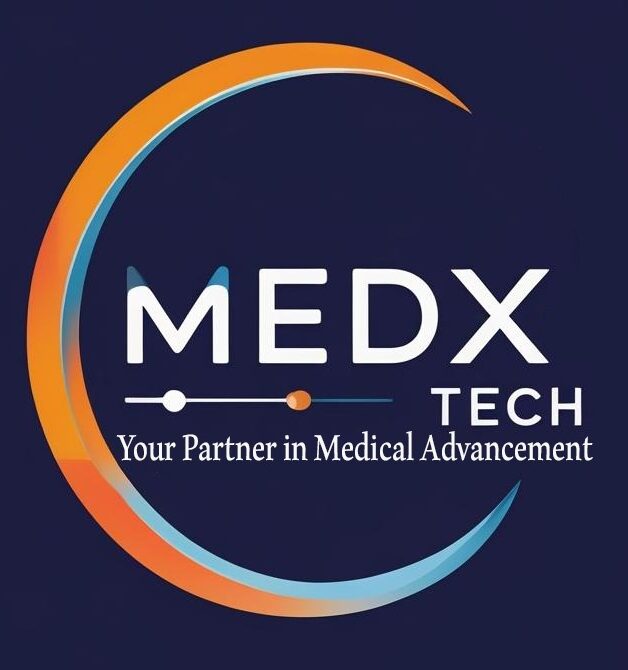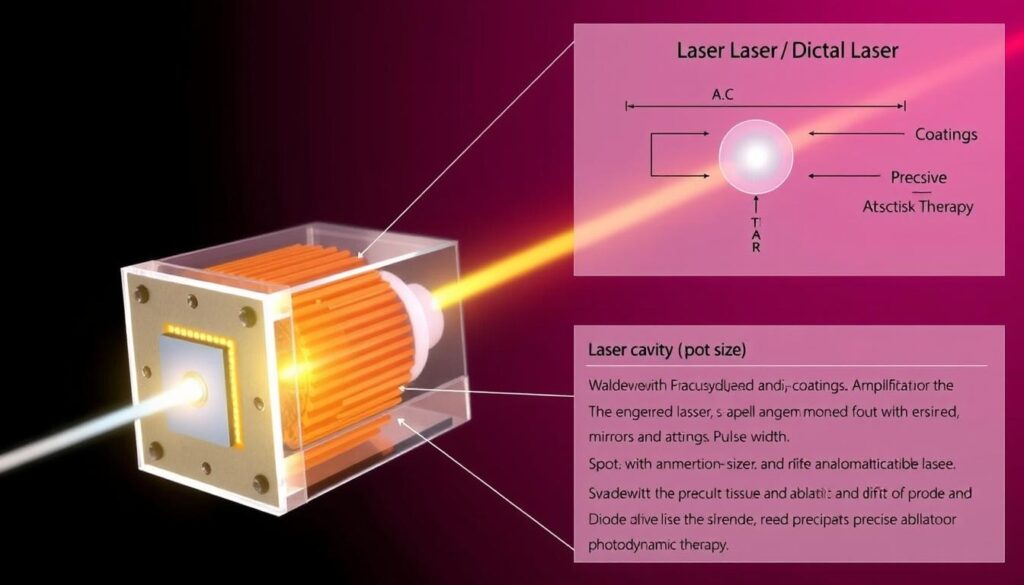Inside the Diode Laser: How Wavelength, Spot Size, and Pulse Width Drive Clinica
Diode lasers have changed many medical and dental treatments. They offer precision and effectiveness. But what makes them so useful in clinics?
We dive into the science of diode laser technology. We look at how wavelength and pulse width shape their use in treatments.
Knowing about these aspects helps us see how versatile diode lasers are in clinics.
Key Takeaways
- The role of wavelength in diode laser applications.
- How pulse width affects treatment outcomes.
- Clinical applications of diode lasers in medical procedures.
- The significance of diode laser technology in modern medicine.
- Factors influencing the effectiveness of diode laser treatments.
The Science Behind Diode Laser Technology
Diode laser technology works by creating precise laser light. This is thanks to semiconductor diodes. They produce laser light through a process called stimulated emission.
How Semiconductor Diodes Generate Laser Light
Semiconductor diodes are made from materials that can amplify light. When an electric current flows through them, they release photons. These photons are then amplified to create a focused laser beam.
This process lets us control the laser’s wavelength, pulse width, and power precisely.
Comparing Diode Lasers to Other Medical Laser Systems
Diode lasers are different from other medical lasers like Nd:YAG or CO2 lasers. They are more compact and energy-efficient. Plus, they are more affordable without losing performance.
Advantages of Diode Lasers in Clinical Settings
Diode lasers have big advantages in clinics. They offer precision, effectiveness, and ease of use. They are versatile for many treatments, from soft tissue surgery to photobiomodulation.
Diode laser technology has changed medical and dental treatments. It gives practitioners a reliable and efficient tool for many procedures.
Wavelength: The Foundation of Tissue Interaction
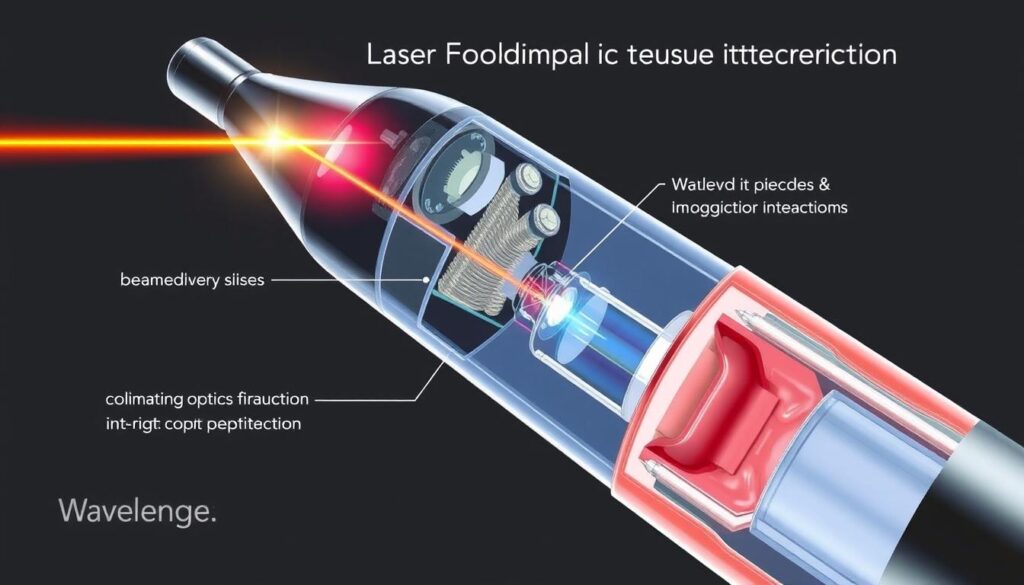
Knowing the wavelength of a diode laser is key for the best results in many treatments. The wavelength affects how the laser works with tissue. This makes it very important for the success of the treatment.
Common Diode Laser Wavelengths in Clinical Practice
Diode lasers come in various wavelengths, from 800nm to 980nm. Each wavelength is best for different treatments. For example, 810nm and 940nm are often used in laser dentistry for soft tissue work.
Absorption Characteristics in Different Tissues
Laser light is absorbed differently by different tissues, based on wavelength. Shorter wavelengths are absorbed by melanin. Longer wavelengths are absorbed by water and hemoglobin. This helps doctors pick the right wavelength for each tissue.
Wavelength Selection for Specific Clinical Targets
Choosing the right diode laser depends on the target tissue and the treatment goal. For example:
- For hair removal and vascular treatments, wavelengths that target melanin and hemoglobin are best.
- In dental applications, wavelengths that target water and soft tissue are used for procedures like gingivectomy.
Understanding how wavelength and tissue interact helps doctors use diode lasers better. This improves treatment results and safety across many applications.
Spot Size: Mastering Precision and Treatment Depth
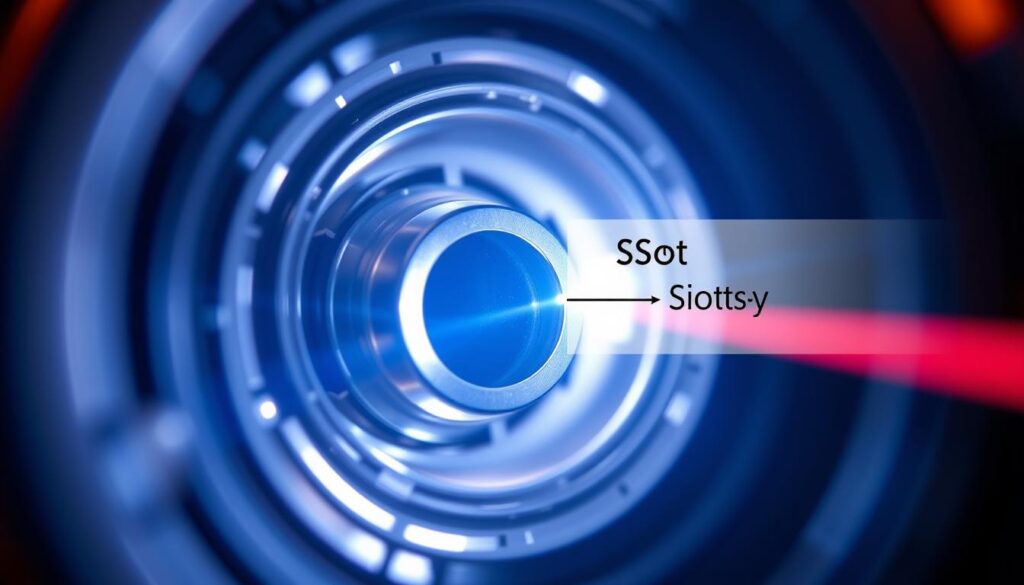
The spot size of a diode laser is key for both precision and treatment depth. A smaller spot size means more precise treatment, perfect for delicate procedures. On the other hand, a larger spot size covers more area, ideal for treating bigger regions.
The Mathematics of Power Density
Power density is vital for treatment effectiveness. It’s the laser power divided by the spot size area. A smaller spot size means higher power density, leading to better tissue interaction. The formula is: Power Density = Laser Power / (π * (Spot Size/2)^2).
| Spot Size (mm) | Laser Power (W) | Power Density (W/cm^2) |
| 0.5 | 5 | 2546.48 |
| 1 | 5 | 636.62 |
| 2 | 5 | 159.15 |
Clinical Implications of Varying Spot Sizes
Changing the spot size affects treatment outcomes. A smaller spot size is great for precise treatments like removing small lesions. A larger spot size is better for procedures like hair removal over bigger areas.
Delivery Systems and Their Effect on Spot Size Control
Delivery systems, like handpieces and fibers, are crucial for spot size control. New advancements in these systems help clinicians get better spot size control. This improves treatment results.
Pulse Width: Controlling Thermal Effects and Tissue Response
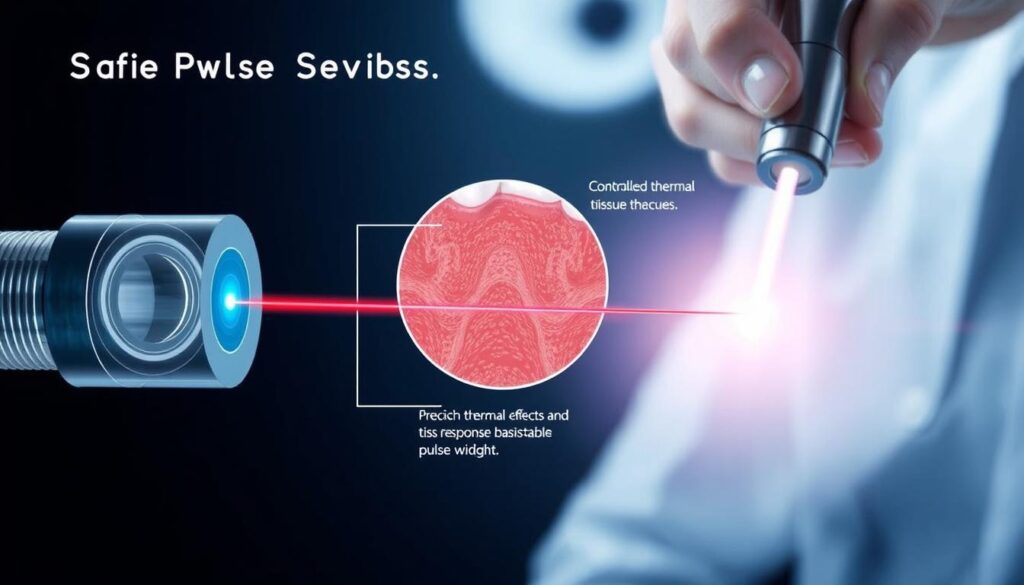
The pulse width of a diode laser is key in controlling thermal effects and tissue response. By adjusting the pulse width, clinicians can manage how long the laser is on. This helps control the thermal energy delivered to the tissue.
Continuous Wave vs. Pulsed Modes
Diode lasers can work in continuous wave (CW) or pulsed modes. CW mode keeps the beam steady, while pulsed mode sends energy in bursts. Pulsed mode is especially good at reducing thermal damage by letting tissue cool between pulses.
Thermal Relaxation Time and Selective Photothermolysis
Knowing about thermal relaxation time (TRT) is vital for laser treatments. TRT is how long it takes for tissue to cool down to half its peak temperature. Selective photothermolysis happens when the laser pulse matches the TRT of the tissue. This ensures damage to the target while protecting nearby tissue.
Advanced Pulse Patterns for Enhanced Clinical Outcomes
Advanced diode lasers have complex pulse patterns like superpulse and micropulse modes. These patterns help clinicians get better results, like better tissue coagulation or less thermal damage. The table below shows how different pulse widths affect tissue interaction.
| Pulse Width | Tissue Interaction | Clinical Application |
| Short Pulse | Minimal thermal damage | Precise tissue cutting |
| Long Pulse | Increased thermal effect | Tissue coagulation, hair removal |
| Continuous Wave | Constant thermal effect | Soft tissue surgery, coagulation |
Inside the Diode Laser: How Wavelength, Spot Size, and Pulse Width Drive Clinical Success
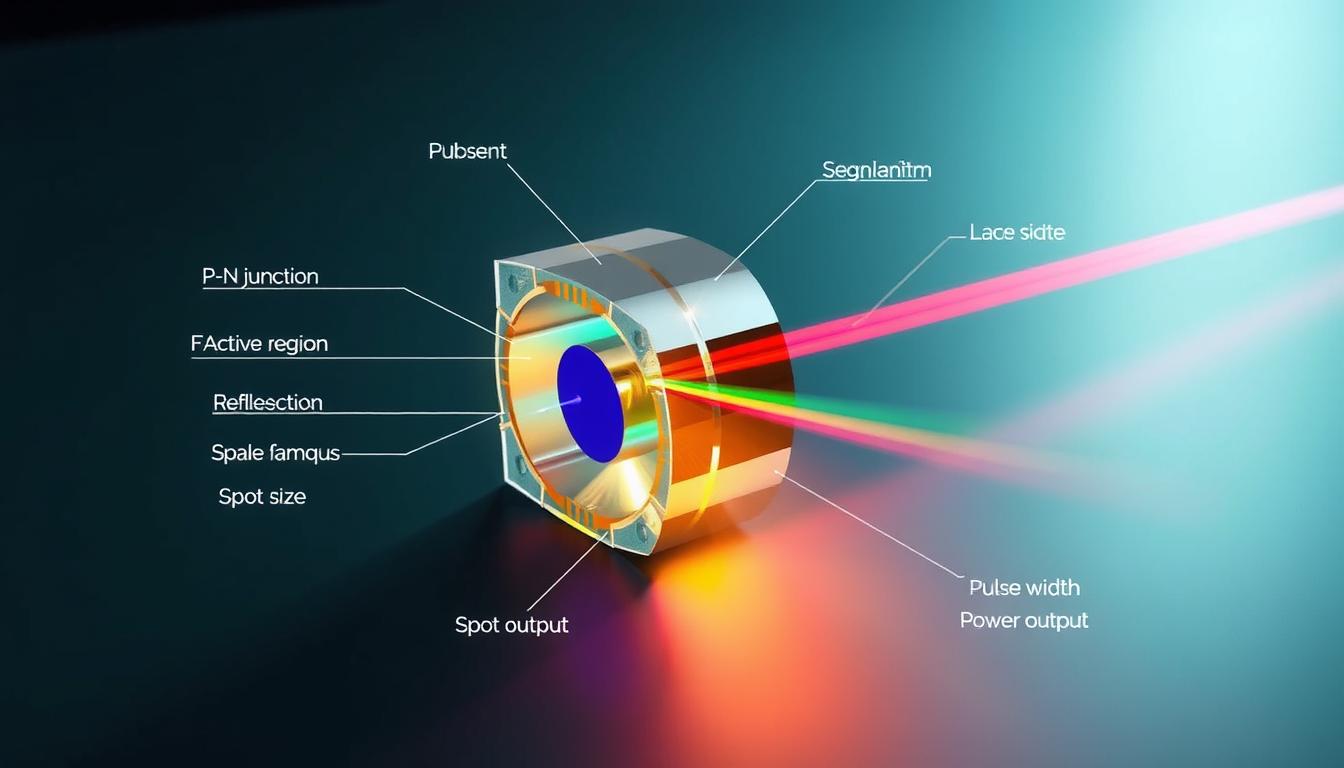
To get the best results with diode lasers, it’s key to know how wavelength, spot size, and pulse width work together. The diode laser technology is complex. Its success depends on getting these parameters just right.
The Synergistic Relationship Between Parameters
The wavelength of a diode laser tells us how it absorbs in tissue. The spot size changes the power density and how deep it can treat. The pulse width affects the heat and how tissues react. Knowing how these interact is vital for the best results.
Case Studies: Parameter Optimization for Different Procedures
Each clinical procedure needs its own settings. For example, a smaller spot size is better for precise treatments. A larger spot size is needed for bigger areas. We’ll look at case studies that show how to adjust wavelength, spot size, and pulse width for different needs.
Troubleshooting Common Parameter-Related Issues
Even with the right settings, problems can still happen. Issues like not getting the right tissue response or too much heat damage can occur. Knowing how to fix these problems helps ensure treatments work well and keeps complications low.
Dental Applications: From Soft Tissue Surgery to Photobiomodulation
Diode lasers are changing dental care, offering precise solutions for soft tissue surgery and more. They are versatile in dental procedures, making them crucial for modern dental practices.
Periodontal Treatments and Endodontic Procedures
The diode laser targets specific wavelengths for effective periodontal and endodontic treatments. Precision is key in these delicate procedures, and the diode laser delivers just that.
In periodontal treatments, the diode laser removes diseased tissue and promotes healing. A study in the Journal of Periodontology showed laser-assisted therapy improved clinical outcomes significantly.
“The use of diode lasers in periodontal therapy has been shown to enhance wound healing and reduce postoperative discomfort.” – Journal of Periodontology
Pain Management and Accelerated Healing
Diode lasers are also key in pain management and healing. Photobiomodulation, a process using low-level laser or light-emitting diodes, stimulates healing and reduces pain.
A table summarizing the benefits of diode lasers in pain management and healing is provided below:
| Application | Benefits |
| Pain Management | Reduced pain perception, decreased inflammation |
| Accelerated Healing | Enhanced wound healing, increased tissue repair |
Parameter Settings for Common Dental Procedures
Knowing the right parameter settings is key for optimal results in dental procedures. Settings vary based on the application, like soft tissue surgery or photobiomodulation.
In soft tissue surgery, a higher power setting is used to cut or remove tissue. For photobiomodulation, a lower power setting stimulates cells without damage.
Medical Applications: Dermatology, Physical Therapy, and Beyond
Diode lasers are used to treat many medical conditions. They are great for vascular lesions and chronic pain. Their precision and versatility make them key in many medical fields.
Vascular Lesions and Pigmentation Treatments
Diode lasers work well on vascular lesions and pigmentation issues. They emit specific wavelengths that target the problem areas. This helps reduce unwanted lesions and pigmentation without harming nearby tissue.
Chronic Pain Management and Rehabilitation
In physical therapy, diode lasers help manage chronic pain and aid in rehabilitation. This therapy, known as low-level laser therapy (LLLT) or photobiomodulation (PBM), uses low-intensity lasers. It stimulates cells to repair tissues and reduce pain.
Emerging Applications in Oncology and Neurology
Research is exploring diode lasers’ use in oncology and neurology. Early studies show promise in alleviating symptoms of some cancers and neurological conditions. This offers new hope for patients.
Conclusion: Advancing Clinical Care Through Diode Laser Innovation
Diode lasers have changed clinical care a lot. They are precise, effective, and can be used in many ways. We’ve looked at how they work and their uses in dentistry and medicine.
The right mix of wavelength, spot size, and pulse width lets doctors customize treatments. This is true for things like soft tissue surgery and removing vascular lesions. As diode laser tech gets better, we’ll see even more uses in different areas.
Knowing what diode lasers can do helps doctors give better care. This knowledge helps improve laser therapy and treatment results. The future of medical care looks bright, with diode lasers leading the way.
FAQ
What is a diode laser and how does it work?
A diode laser is a special kind of laser. It uses semiconductor diodes to create laser light. We use them in medical and dental work because they are precise and effective.
How do I choose the right wavelength for my clinical application?
Choosing the right wavelength depends on what you’re treating and what you want to achieve. We look at how different tissues absorb light and the treatment goal to pick the best wavelength.
What is the significance of spot size in diode laser treatments?
Spot size is key for precision and depth in diode laser treatments. We use various spot sizes to get the right results. Knowing how power density works is important for good treatment.
What is the difference between continuous wave and pulsed modes in diode lasers?
Continuous wave and pulsed modes have their own benefits and drawbacks. We use continuous wave for some tasks and pulsed mode for others. It depends on the treatment goal and the target.
How do I optimize diode laser parameters for different procedures?
Optimizing diode laser parameters means understanding how wavelength, spot size, and pulse width work together. We look at examples and discuss common issues to ensure the best results.
What are the benefits of using diode lasers in dentistry?
Diode lasers are great for dentistry, helping with soft tissue surgery, periodontal treatments, and more. They help us treat precisely and effectively, managing pain and speeding up healing.
Can diode lasers be used for medical applications beyond dentistry?
Yes, diode lasers are used in many medical fields, like dermatology and oncology. We explore new uses and the potential of diode lasers in these areas.
How do I troubleshoot common issues with diode laser treatments?
Fixing common problems with diode lasers means understanding what affects treatment success. We talk about common issues and how to adjust parameters for better results.
